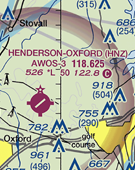Observations from an examiner
I have been a instructor for more than 40 years, and a pilot examiner for 26. In these two positions, I have seen students and pilots with a wide range of abilities, education and experience. I can honestly say that I have only encountered one person who I truly believed could not learn to fly. Of course some progressed slower than others and some gave up. The highlights of my career have been the instances when I could help the students other instructors gave up on overcome their weaknesses and become good pilots. My biggest regret is that I could not do it for that one individual.
As an examiner it is not my job to instruct, but only to evaluate, and with more than 4,000 flight tests under my belt, I regret the number of times I saw a flaw in a pilot’s performance and could not help correct that flaw. Quite often the flaw was not something that resulted in failing the test. The instructor in me calls it a tendency to do something wrong or dangerous while still meeting the Practical Test Standards (PTS).
Many of these situations involve weight and balance (W&B). Manufacturers try to come up with easy methods to determine if an airplane is within center of gravity limits. For instance the method used in many Cessna manuals does not require that the CG be computed. All that is necessary is to compute the weight and total moment.
Unfortunately this does not give the necessary information to determine whether fuel burn will move the CG forward or aft. To do this it is necessary to know the arm of the fuel and the actual loaded CG or do an entirely new W&B with a different fuel load. Since it is possible in many airplanes for the CG to move out of the CG range as the result of fuel burn, such information is important.
Another problem: Most applicants only compute the takeoff W&B. This does not meet PTS requirements that the pilot assure the airplane is within CG for the entire flight. I used to tell applicants that they had only done half of the problem. Now, to avoid a bad situation, I tell them that a W&B includes a landing W&B. Most have never done this before. What I see here is a lack of understanding of the importance of W&B, which is a serious deficit in their knowledge.
Another tendency towards danger is the effects of yaw and proper rudder usage. All too often an applicant will meet standards on maneuvers but be very marginal on the proper use of rudders and control of yaw. As an examiner I can only advise them of this on the debriefing and hope he or she makes efforts to correct it later.
Other areas where I see major weaknesses are preflight planning, weather analyses and the correlation of various maneuvers to situations not covered on the flight test. These include the use of electronic flight computers to determine estimated ground speed and magnetic heading without knowing the principles behind it, a poorly prepared flight log and failure to maintain the log during the flight. I recently encountered a situation where a planned flight could not have been completed based on the fuel on board because of stronger headwinds than forecast. This resulted in a failure and a very upset applicant and instructor.
All pilots, but most importantly new pilots, should fly with an experienced instructor who can spot these tendencies and work with the pilot to correct them. Get with an instructor who sees beyond the flight test to what it takes to make a truly safe pilot. An instructor whose flying experience is less than 1,000 hours may be excellent in training for a flight test, but they do not have the practical experience to go beyond that. The instructor I recommend here may not be very good at preparing someone for a flight test, but has the experience and ability to spot subtle weaknesses that could lead to future problems and be able to correct them.


